Vacuum Insulated Evaporators
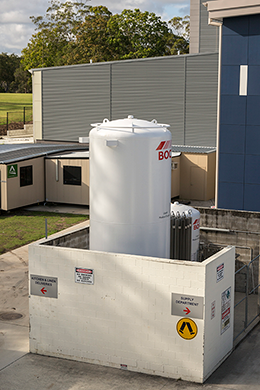
Large hospitals usually store oxygen in liquid form in a cryogenic tank. The oxygen is kept well below the critical temperature, to reduce the pressure necessary to keep it liquid.
These tanks have an inner shell and an outer shell separated by a vacuum. This reduces heat gain from the environment.
The tank is kept cool by the latent heat of vaporisation of the liquid oxygen. This means that for a VIE to be a suitable choice, the institution needs to use enough oxygen to keep the tank cool. Institutions, such as day stay centres, where there is no oxygen uasge overnight are less suitable for VIEs.
Temperature Too Low
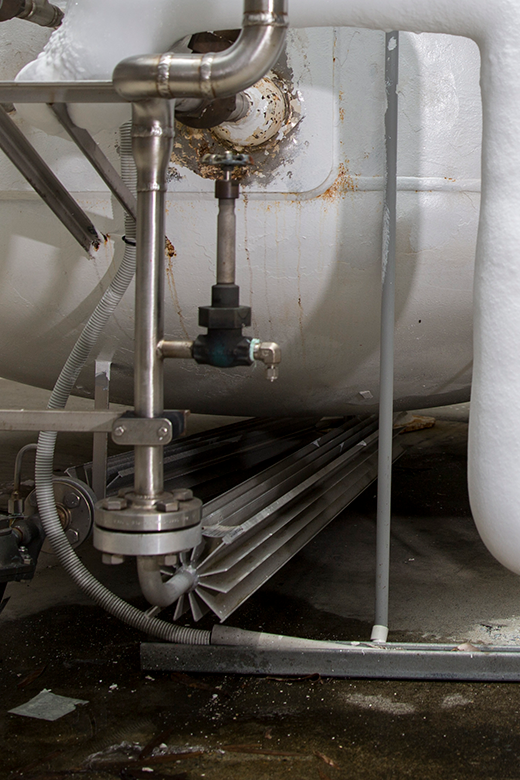
If usage is high, the temperature in the evaporator will fall. If it falls too far, the regulators governing the pipeline pressure will no longer function correctly.
To prevent this, when the pressure falls below a threshold, a valve opens which allows oxygen to flow through a heat exchanger fin. This vaporises the oxygen and raises the pressure in the tank.
Warming of Gaseous Oxygen
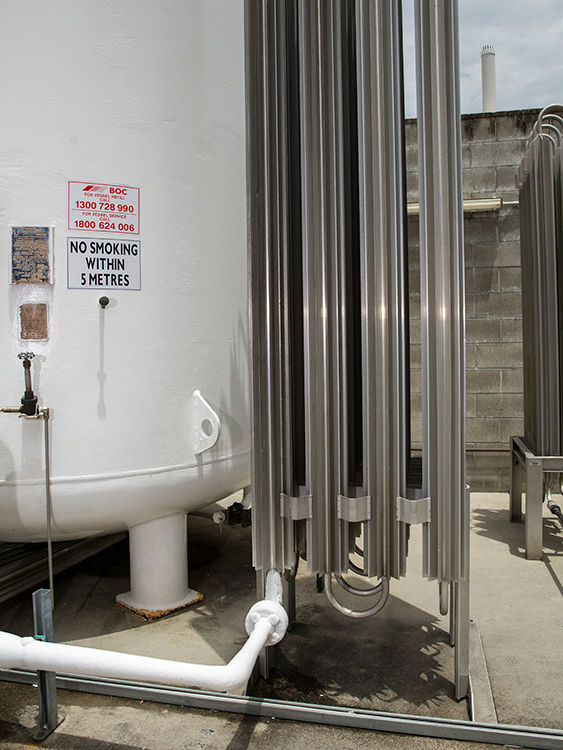
The oxygen supplied from these tanks is very cold, and must be warmed before being given to patients. To do this, the gas is passed through heat exchanging fins.
The gas is warmed by the ambient atmosphere. No additional power is required. This photo was taken in the Australian summer. You can see ice has formed on the line leading to the fins. In colder temperatures ice will form on the fins as well.
Temperature Control
Temperature Too High
If usage is too low, the temperature will rise until the safety valve opens. When this happens the tank will vent gas. This is a normal part of the function of these tanks.
Measurement of Contents
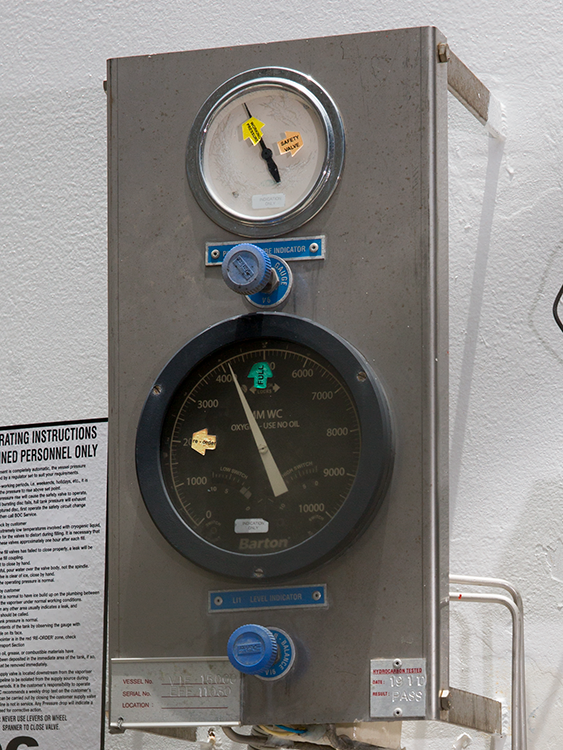
Because the oxygen is stored as a liquid, you cannot measure the contents using the gas pressure
VIEs measure the contents by measuring the difference in pressure between the top and the bottom of the tank.
Filling
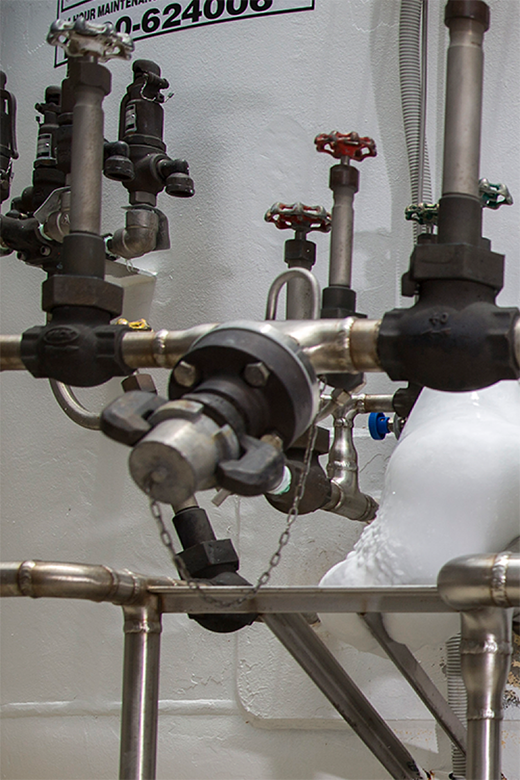
The tank is filled from a tanker using a hose with a gas specific coupling.
Gas specific couplings have sometimes been removed when staff have been unable to connect the wrong gas.
There was an incident in Australia after a new oxygen cart was delivered. The cart actually contained nitrogen, and was fitted with gas specific couplings. Because they didn't fit, they were swapped with those from the old cart.
The supply was used to fill the emergency oxygen tanks in a number of planes before the error was noticed.